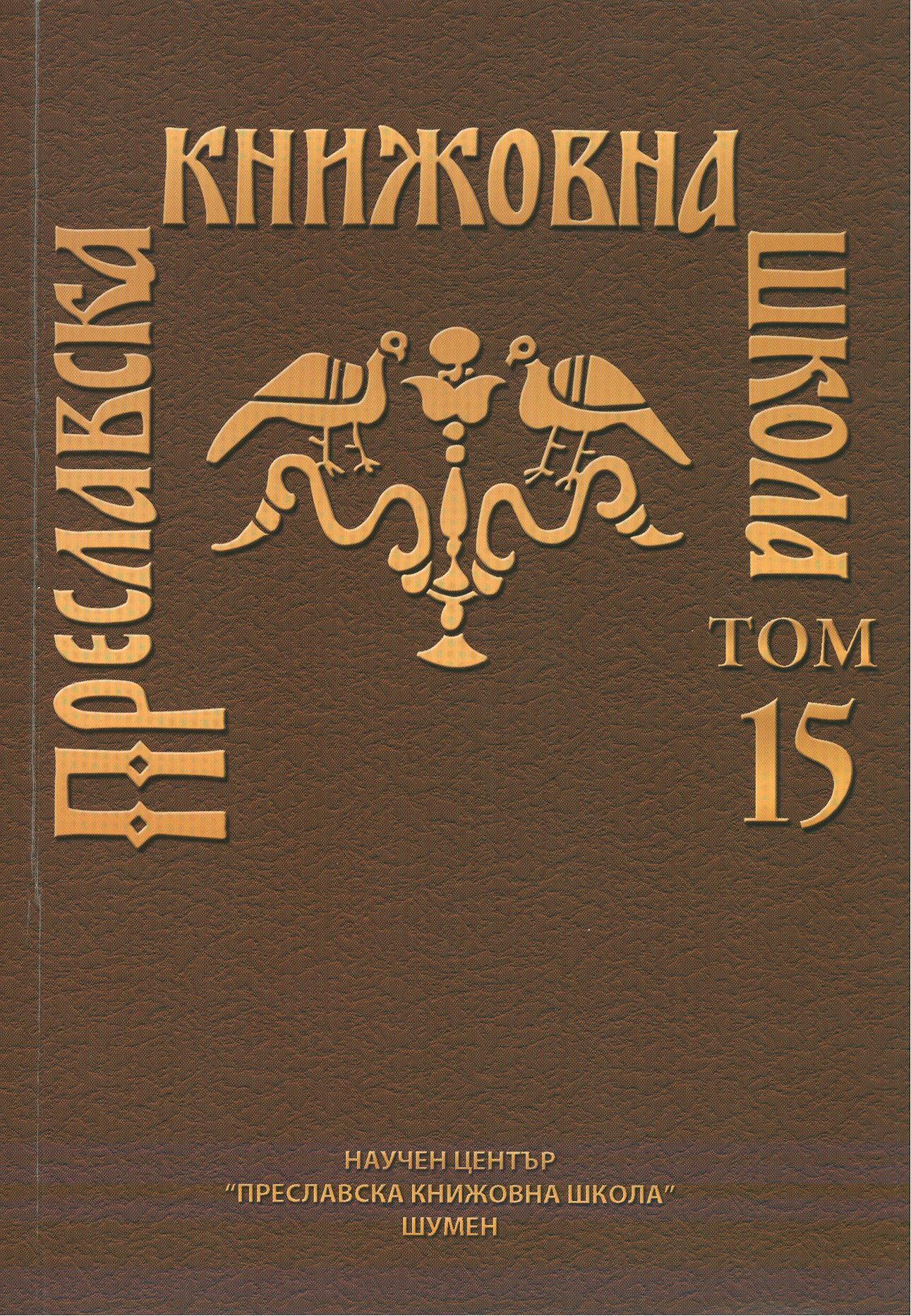БУСТРОФЕДОННОТО ПИСАНЕ ПРИ ПРАБЪЛГАРИТЕ
PROTO-BULGARIAN BOUSTROPHEDON WRITING
Author(s): Zarko ZhdrakovSubject(s): History, Cultural history, Middle Ages, 6th to 12th Centuries
Published by: Шуменски университет »Епископ Константин Преславски«
Keywords: boustrophedon writing; Huno-Bulgarians writing;
Summary/Abstract: The Huno-Bulgarians adopted the boustrophedon writing when they were in Central Asia and to prove this is the plate of Attila’s son Khan Dengizich (+469) who is shown with a crown having two horns like Alexander the Great and a dedication in Turkic language written with Sogdian letters. Great ancient Bulgaria followed the written tradition and when there were inscriptions in Greek letters, as it is with the three golden ring seals belonging to Khan Kubrat (+665) in the treasure of Malaya Pereschepina, a two-way reading is possible. Boustrophedon written practice had made it easy for the penetration of "Saracen books" during the ninth century in Danube Bulgaria and also of Islam by the river Volga during the tenth century. Cufic signs were witnessed at the entrance of a cave which is situated above the Madara Horseman and also on a bronze medallion mirror of Khan Zvinich Persian (+852) from the Byzantine Museum in Athens. Examples of writing from right to left with "not proper" Greek and Latin letters in Greek, Latin and Turkic language can be seen in the Banat golden treasure of khan Asparuh (+695) – e.g. λαως 'nation, army' on ewer № 3 and 4; D(ominum) N(ostrum) "Our Lord" (from left to right) and λαως εστι(α) εσογυ "people, sacrificial fireplace, offering" on tray № 8; inscription in three lines Iσους b(α)σιλε/ Λεdα / συγ "Jesus King, Leda, River" near an image of a mountain and a river on ewer № 6, one line inscription Λεdα Τ<Δ>ιως "Leda, Zeus" on stem-high chalice № 22, 23 with the symbol of the owner E(spererih) can "Asparuh Khan" (from left to right) and жоп(a)n also on rhytons and golden nomadic cups № 9, 10 with a symbolic for the nomads inscription in Greek “And He said, do rest" (after Gen. 2: 2-3) and the bilingual leap year of the Snake (Dylon) 693. These golden vessels were made on the occasion of the first anniversary of the founding of the state in 681 in the leap year of the snake and in "the day when God rests" meaning that when "he who makes a treasure shall live long" (apocryphal Legend of the seven days). The boustrophedon writing habits of the Bulgarians remained even after the conversion to Christianity in 866, evidenced by pseudo runic inscription of the seal with seven rays from the time of Vladimir Rasate (889-893), covering the reformation of the Glagolitic writing in Pliska. It has the shape of the monogram of Jesus Christ and is in bilateral vertical boustrophedon inscription in proto-Bulgarian language dedicated to the Good One - ΙΥΙ from turk. iyi "good" (front side) shepherd - ЖУБАНЪ from çoban 'shepherd' (reverse side) to the motherland - ЕАЛѢ from Turk. il 'district, province', written from top to bottom and from left to right and water-constructor / army-constructor - from Turk. su 'water', sü 'army', yap 'make, organize', written from bottom to top and from right to left. The boustrophedon writing continued to exist even in the tenth century, as shown by a two-line inscription on a stone block of the court church in Preslav: АЗЪ ДАЧ/ИН Б(Е)Л(Е)Г ‘I of Dach token’, which is reminiscent of the ancient speaking tombstones (stele). Painters kept the Boustrophedon writing throughout the centuries, as evidenced by the icon of the court singer Cosmas from 1242 with the author’s dedication sent to the afterlife as an afterword in the open book of Christ Pantocrator, as well as the dialogue in the Vision of St. Peter of Alexandria.
Journal: Преславска книжовна школа
- Issue Year: 2015
- Issue No: 15
- Page Range: 415-425
- Page Count: 12
- Language: Bulgarian

